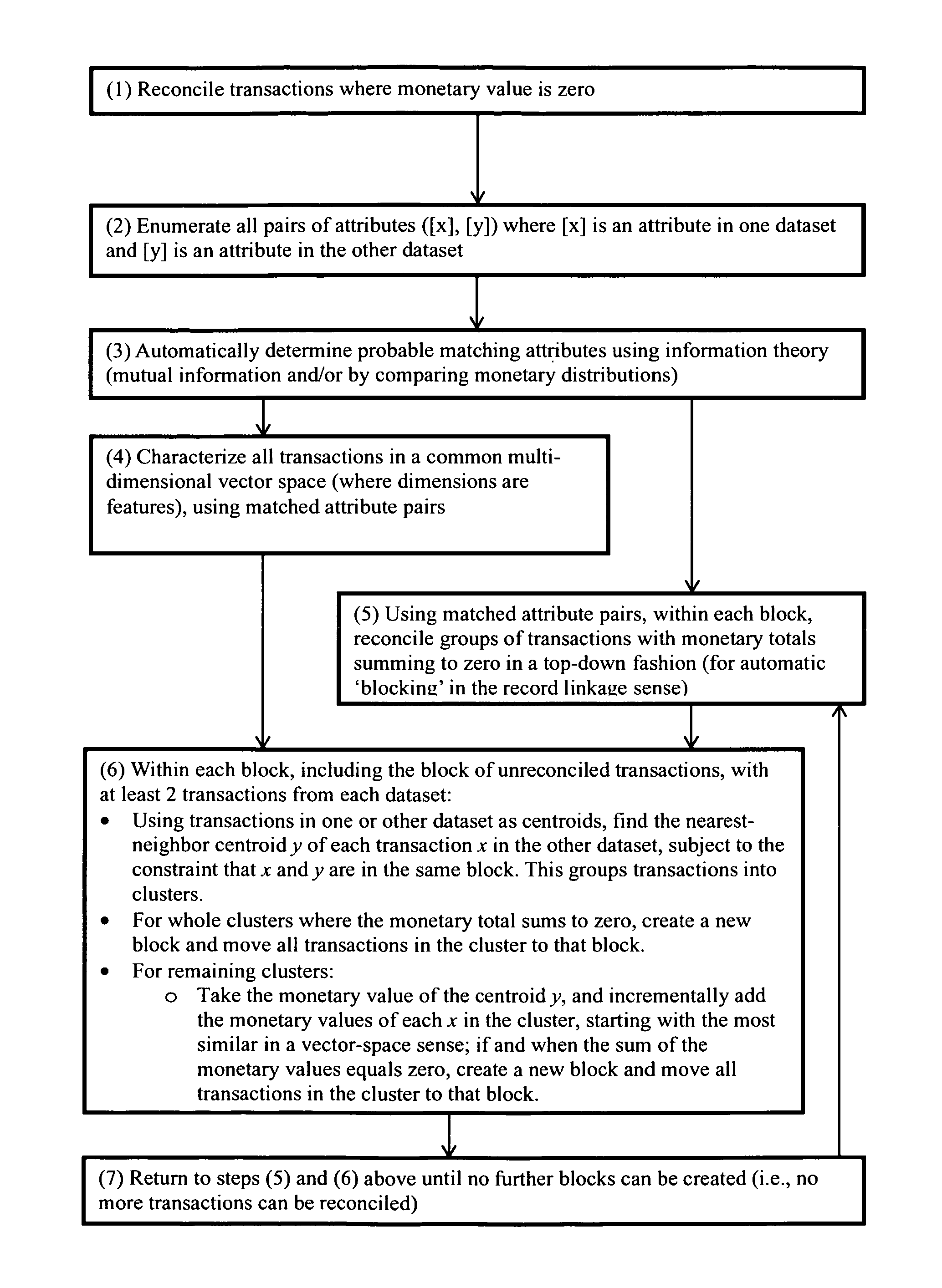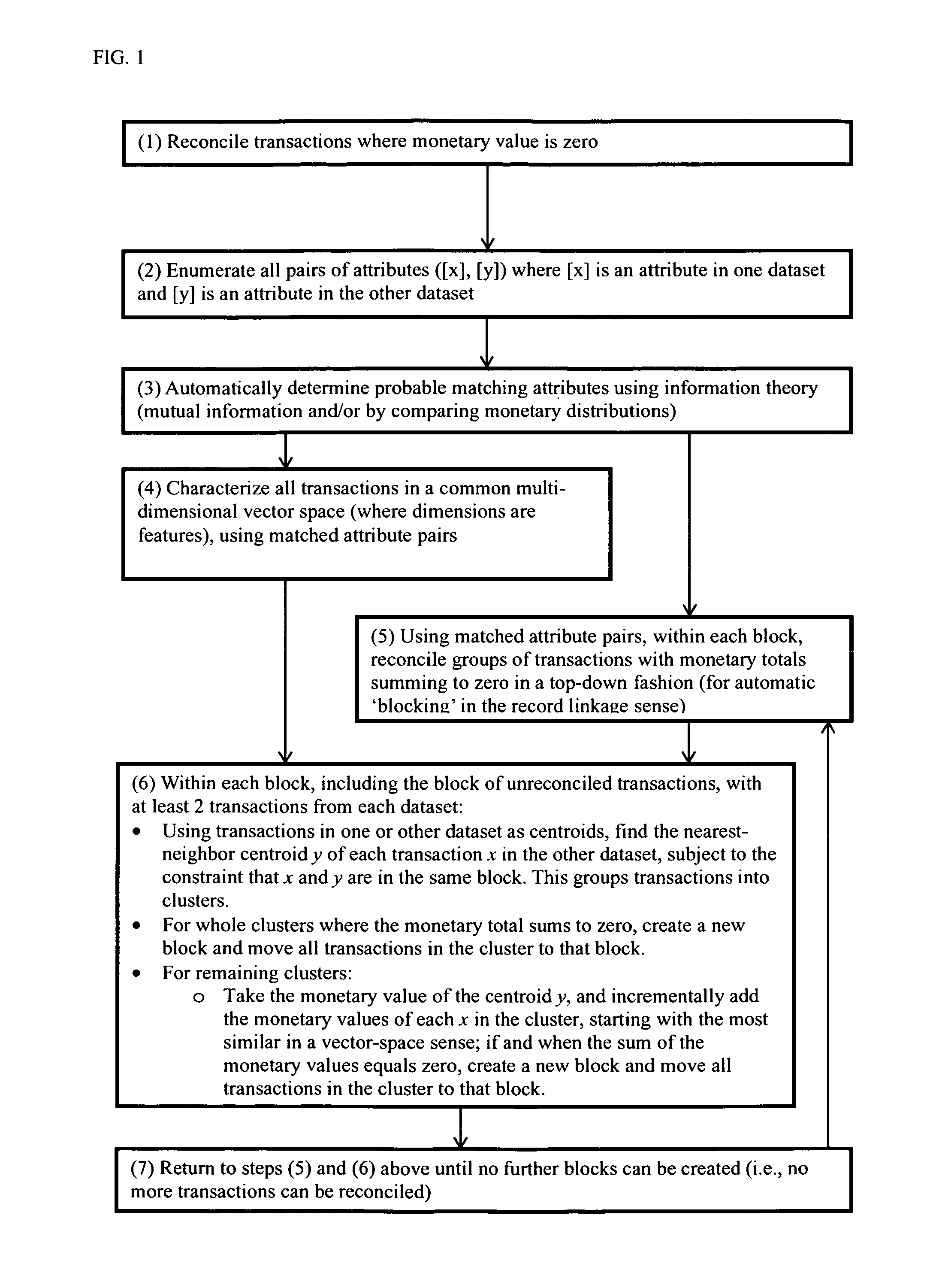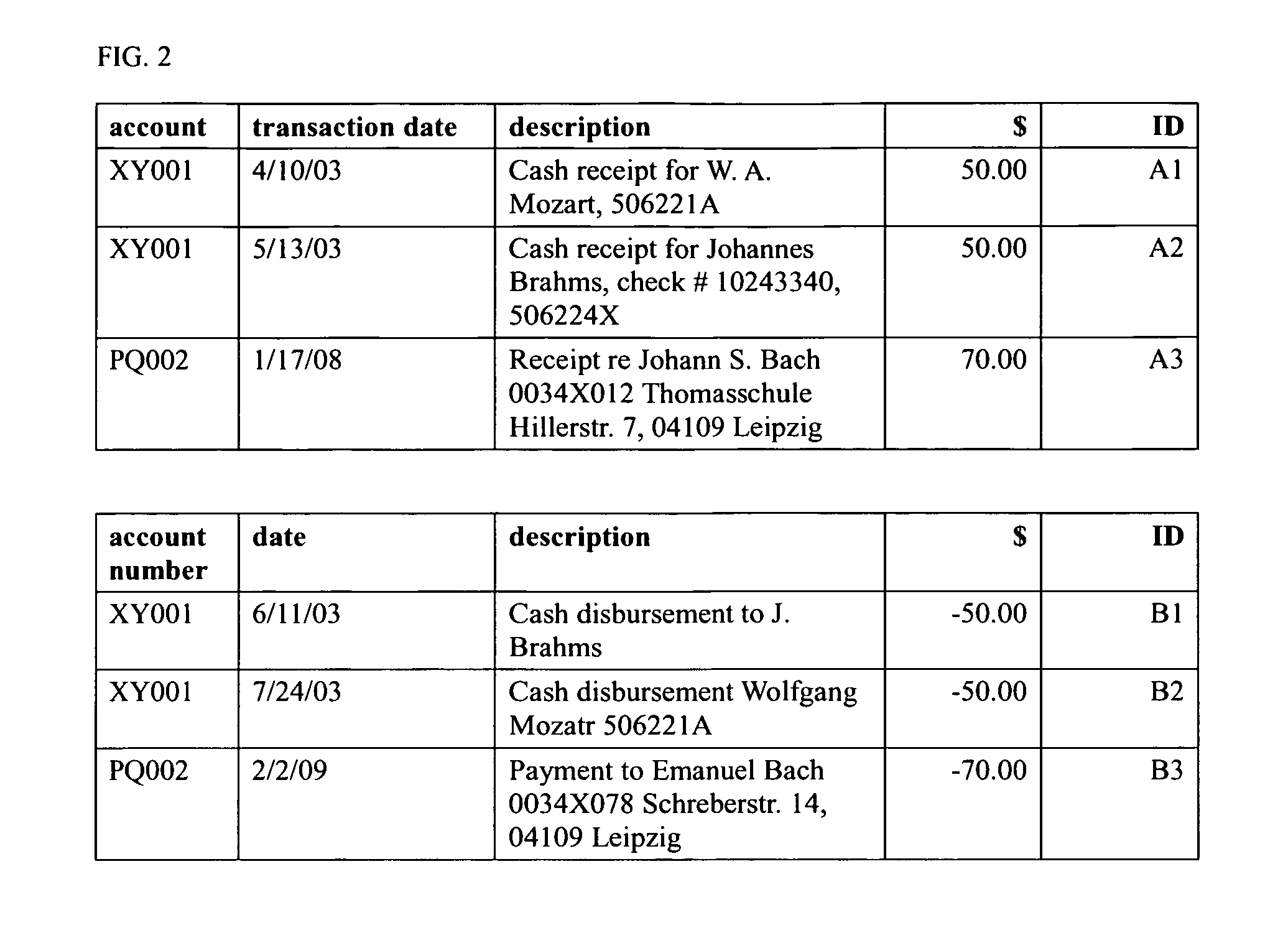Flexible account reconciliation
a flexible, account reconciliation technology, applied in the field of account reconciliation, can solve the problems of inability to achieve significant efficiency and time-saving in the area where, and the amount of time consumed is limited, so as to maximize the amount of manual labor that can be saved, the effect of saving the most of the labor
- Summary
- Abstract
- Description
- Claims
- Application Information
AI Technical Summary
Benefits of technology
Problems solved by technology
Method used
Image
Examples
Embodiment Construction
1. Definitions
[0027]Key terms used herein are defined below, and illustrated further in the Drawings.
[0028]‘Dataset’ as used herein shall mean a table of accounting data, for example a list of debits and credits as presented on a paper or downloaded bank statement, or data extracted from a database or accounting system. Each reconciliation problem reduces to matching transactions (rows) in a pair of datasets, i.e. exactly 2 datasets.
[0029]‘Transaction’ as used herein shall mean a single row in a dataset associated with a monetary value, for example a single debit or credit entry on a bank statement. For example, 6 transactions (3 per dataset) are illustrated in FIG. 2 of the Drawings.
[0030]‘Attribute’ as used herein shall mean a characteristic of each transaction associated with a dataset column. Attributes can be referred to by the relevant column heading in square brackets. FIG. 2 of the Drawings illustrates [account], [transaction date] and [description] attributes for the first ...
PUM
 Login to View More
Login to View More Abstract
Description
Claims
Application Information
 Login to View More
Login to View More - R&D
- Intellectual Property
- Life Sciences
- Materials
- Tech Scout
- Unparalleled Data Quality
- Higher Quality Content
- 60% Fewer Hallucinations
Browse by: Latest US Patents, China's latest patents, Technical Efficacy Thesaurus, Application Domain, Technology Topic, Popular Technical Reports.
© 2025 PatSnap. All rights reserved.Legal|Privacy policy|Modern Slavery Act Transparency Statement|Sitemap|About US| Contact US: help@patsnap.com



